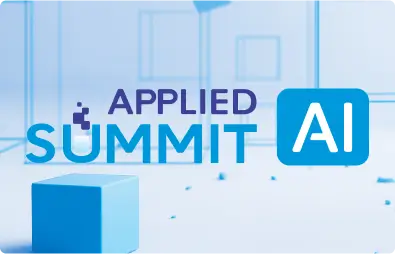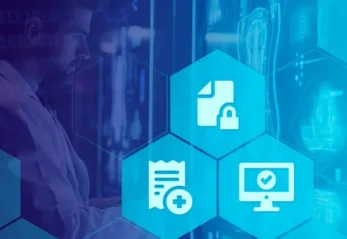Every year, health plans invest massive time and resources trying to close quality gaps before the reporting deadline. Teams chase medical records, manually abstract charts, and reach out to members multiple times to confirm screenings or lab values.
But as the industry shifts toward digital quality measures (dQMs) and electronic clinical data systems (ECDS), this manual approach simply can’t scale. The next leap forward in quality performance will come from automation — powered by healthcare-trained NLP (Natural Language Processing) and Large Language Models (LLMs) purpose-built for clinical data.
From Manual Chart Review to Real-Time Quality Signals
The vision for payers and value-based care organizations is simple but powerful:
Accelerate measure closures while reducing the number of member touches required per closure.
Achieving that means being able to automatically locate clinical evidence of care directly from unstructured documentation — such as physician notes, lab reports, radiology results, and scanned PDFs — without waiting for manual chart review.
The Challenge: HEDIS Data Is Everywhere
Quality measures depend on a wide range of clinical evidence, from a blood pressure reading or A1C value to proof of a mammogram, colon cancer screening, or medication reconciliation after discharge.
The required data elements span dozens of sources and formats:
- Vitals and labs: blood pressure, A1C, eGFR, uACR
- Screenings and procedures: mammograms, colonoscopies, cervical cytology, DEXA scans
- Medications: name, dose, frequency, reconciliation records
- Preventive care: immunizations, chlamydia screening
- Functional and care assessments: medication reviews, functional status documentation
Most of this data lives in free text — buried inside encounter notes, care coordination summaries, or scanned clinical documents. Extracting it consistently, at scale, is a challenge that traditional systems were never designed to solve.
Why General-Purpose AI Isn’t Enough
While general LLMs like GPT-4 or Claude can summarize text, they lack the precision, medical vocabulary, and contextual reasoning needed for quality reporting.
Healthcare requires understanding nuances such as:
- “A1C 7.2% collected 02/03/25” → current-year, controlled result
- “BP 128/78 on 3/14/25” → compliant with the year’s measure
- “Colonoscopy 06/2019 – normal” → valid within 10-year lookback
Generic models don’t handle these semantics, nor do they run securely within HIPAA-compliant, on-premise environments where payers must process PHI.
How Healthcare-Specific NLP and LLMs Solve the Problem
John Snow Labs’ Healthcare NLP and Medical LLMs are built precisely for this kind of work, reading and understanding clinical documentation with high accuracy, and turning it into structured, auditable quality data.
Here’s how the process works:
- Ingest diverse clinical sources
EHR exports, clinical notes, radiology and pathology reports, discharge summaries, and lab results are all fed into the NLP pipeline — even when unstructured or scanned. - Extract and normalize clinical entities
Models trained on healthcare-specific corpora identify medications, vitals, labs, procedures, and care assessments.
Example:- “Mammogram 08/05/2024, BI-RADS 1” → screening complete
- “No evidence of diabetic retinopathy, 12/15/2024” → compliant eye exam
- “Medication reconciliation done 9/18/2025” → post-discharge compliance
- Apply measure logic and lookback windows
Each finding is automatically mapped to the right HEDIS/Stars measure with date logic applied — for example, 10 years for colonoscopy, 2 years for mammogram, or 30 days for post-discharge medication reconciliation. - Generate structured ‘quality signals’
The output includes:- Measure status: Open / Closed / Needs follow-up
- Evidence: Source, date, and context
- Confidence score: For audit and validation
- Recommended action: Member outreach or PCP follow-up
These signals can then feed directly into payer dashboards, Stars platforms, or HEDIS abstraction systems.
The Results: Quality Signal Lift
By surfacing evidence earlier and more accurately, AI enables on-time measure closures, reduces redundant outreach, and improves overall member experience — all while freeing up clinical resources for higher-value work.
Preparing for the Digital Quality Era
As NCQA moves fully toward digital quality measures, health plans will need to manage and analyze exponentially larger volumes of clinical data across EHRs, labs, and care coordination systems.
Healthcare-specific NLP and LLMs are the foundation for this shift — bridging unstructured and structured data to make automated, explainable quality reporting possible at scale.
Conclusion
The future of Stars and HEDIS performance lies in automation that understands clinical language. By deploying healthcare-specific NLP and LLM technology, payers and provider organizations can turn unstructured data into actionable, real-time quality intelligence — improving accuracy, accelerating closures, and ultimately driving better health outcomes and higher Star ratings.
At John Snow Labs, we’ve spent years developing and benchmarking the world’s most accurate healthcare NLP and LLM models — designed specifically for these use cases.
They’re secure, on-premise deployable, and ready to power the next generation of quality measurement.
Because when your data can tell its story automatically, quality improvement becomes continuous, not seasonal.































